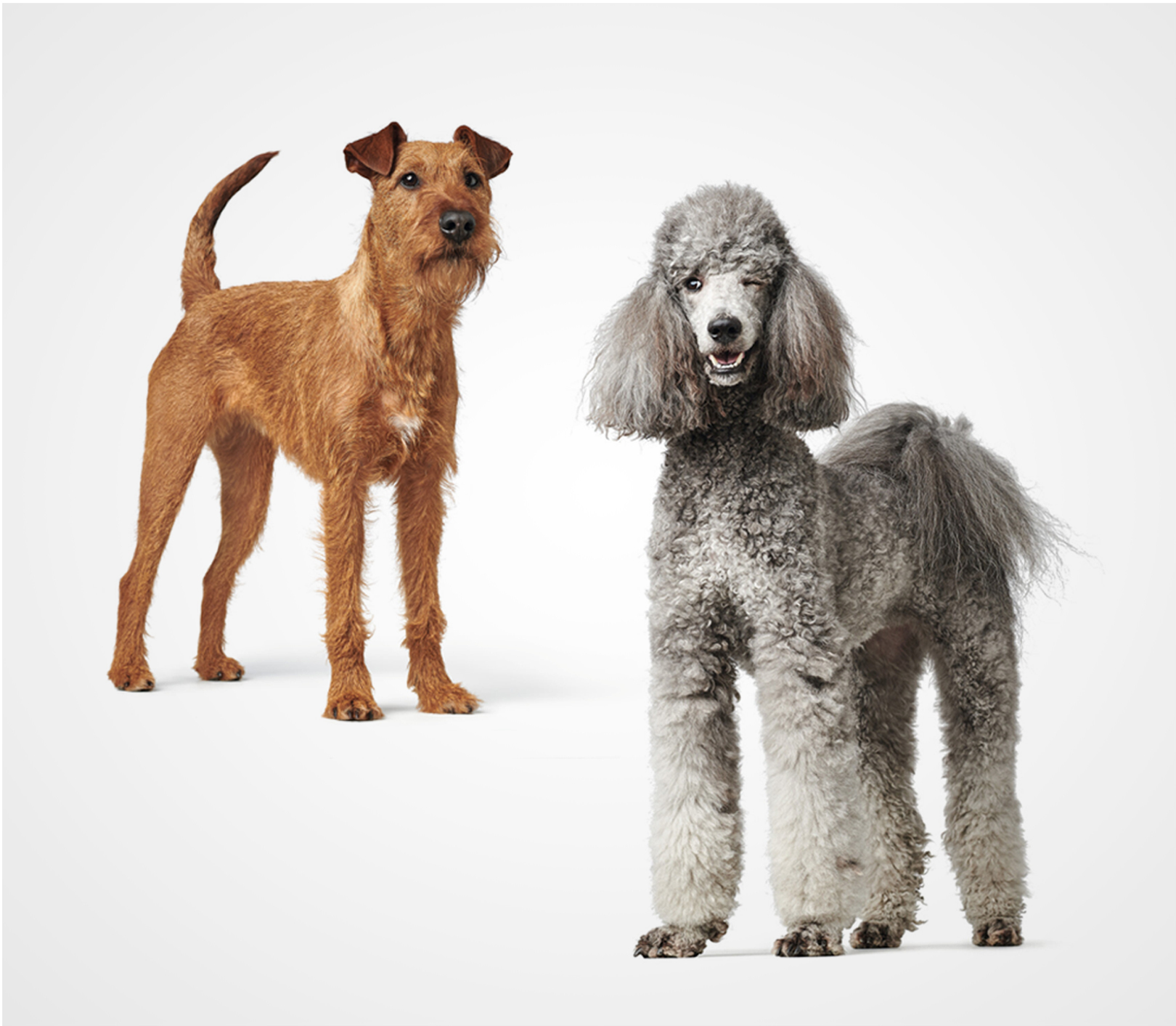Types of coat in dogs: The hairy differences
If your dog plays a lot with other dogs, you may have noticed that some playmates shed more fur than your pet when they romp around in the grass. Other four-legged friends, on the other hand, bring heaps of small twigs and undergrowth with them from the forest in their long fur and need to be thoroughly cleaned after their adventure. As individual as the nature of our furry noses is, so different are the coat structures. We explain to you what functions the dog's coat fulfils, what types of hair there are and how to care for your four-legged friend's coat properly.
The coat of the dog
Almost all dogs are covered with fur all over their body. Only the nose and paw pads are hairless. The sometimes more, sometimes less dense coat not only makes the four-legged friends look particularly cute, it also helps our furry noses to regulate cold and heat, serves to communicate with each other and helps dog owners to recognise how the furry noses are feeling at the moment: if the coat is smooth and shiny, for example, this indicates a relaxed attitude and well-being. We have compiled all the important information about your pet's protective coat:
5 things to know about your dog's coat
- Growth: Dog hair grows in tufts from funnels.
- Signals: Nerve cells in the dog's skin react to external influences and send signals to tiny muscles, which then make the coat bristle or cling to the body. This is how the hair usually bristles away from the body, If your four-legged friend is excited or insecure.
- Supply: Sebaceous glands supply the coat with minerals and fat, making it look healthy and shiny.
- Protection: Sebaceous deposits at the roots of the hair provide dogs with excellent protection against wetness.
- Weight: While a single dog hair appears very light, large breeds with very dense and long hair, such as the Labrador, carry almost one kilogram of coat on their bodies.
Top coat and woolly hair
The topcoat, also called awn hair, grows on all dogs. They are different from the woolly hair (also called undercoat or underfur), which is only present in certain breeds of dog. Woolly hairs are soft and do not grow evenly on the dogs' bodies. Up to 20,000 hairs cover one square centimetre in particularly dense undercoats and, depending on the breed, grow only a few millimetres or reach a length of about 2 cm. In summer, the undercoat thins out overall and becomes denser again with the autumnal coat change and the falling outside temperatures.
Our tip: Brush out the dead wool hairs regularly so that they do not remain under the top coat, as they form a carpet there, do not allow enough air to reach the dog's skin and promote itching.
Outer coat and undercoat differ in structure, growth, density and function:
- Coat structure
The outer coat of the dogs is thicker than the undercoat, but does not grow as densely. The original structure, which is still found in Nordic wolves, is the stock coat. All other types of coat have only developed through breeding. Since the genes of our domestic dogs have constantly changed through crossbreeding and further breeding, there are now also mixed forms such as wire hair or strongly curled fur.
- Growth cycle
The life of a awn hair usually lasts six to eight weeks until it dies and falls out. A new hair root then forms from which the new hair grows. The situation is different for curly dogs with wavy hair, which remains permanently in the growth phase.
- Hair density
Depending on the breed, 400 to 1200 topcoats grow per square centimetre of dog skin. In a healthy dog, there are no bald patches and even during the coat change, our furry friends lose their topcoats one by one and not in clumps. Severe hair loss and bald patches on the skin always indicate an immune deficiency or disease in the dog. The density of the undercoat depends on how long daylight is available: In spring it thins out, in autumn it thickens again. Unlike the top coat, the woolly coat changes only twice a year.
- Function
The top coat not only influences the appearance of our four-legged friends, but also protects them from external influences:
- Pigments in the dog's hair give the coat its colour depending on their number.
- The outer hairs conduct water (e.g. rain) away and thus protect the dog from getting soaked.
- Sharp and pointed objects such as thorns do not easily penetrate the skin.
- The topcoat keeps the dog warm and protects the skin from too much sunlight.
The undercoat sits particularly close to the dog's skin and protects the four-legged friend from extreme cold in winter like an insulating layer. The thinner underfur in summer protects the dog from the sun in addition to the awn hairs.
The 5 types of coat
Whether curly, smooth, wiry or fluffy - dog breeds are basically assigned to these 5 coat types:
Stick hair
In this type of coat, a distinction is made between short stick hair and long stick hair: Short hair is between 3 and 4 cm long, while long hair reaches 5 to 10 cm and usually grows smoothly. Rarely there are slight waves. Stockhaired dog breeds include Rottweilers, German Shepherds, Huskies and Collies. In some long-haired breeds, the undercoat grows almost as long as the awn hair and forms a double coat; in other stockhaired breeds, however, there is almost no woolly coat.

Grooming tips for the stick coat:
Brush your dog's coat 2 to 3 times a week to gently remove dead hair. Dogs with a long coat should be combed before brushing. In this way you can gently loosen possible knots and tangles. Particularly suitable for grooming this type of coat are:
- Grooming coomb
- Massage curry comb
- Grooming brush
Shorthair
The hair, which is only 1 to 2 cm short and smooth, lies close to the dog's body. Some shorthair breeds have a very dense undercoat, while others have little undercoat. Some breeds do not grow any woolly hair at all. In general, e.g. Dobermans, Labradors, Miniature Pinschers and Boxers belong to the shorthaired dog breeds.
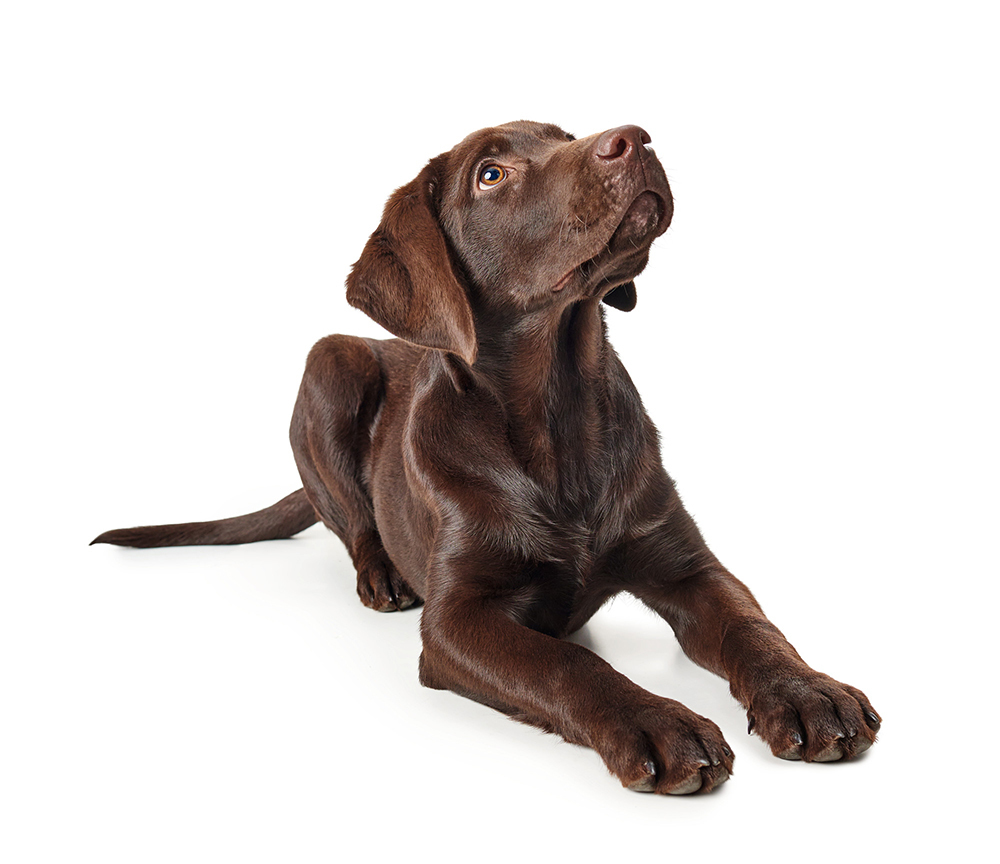
Grooming tips for the shorthair
The best way to remove dead undercoat is with a brush. The short topcoat comes off particularly gently if you massage your dog gently. It is best not to use metal brushes and currycombs, but instead to use:
- Massage curry comb with rubber nubs
- Care glove
- Grooming brush
Longhair
Longhair
The often very dense outer coat can grow up to 20 cm long and hangs smoothly down the body. The undercoat varies from very long to non-existent depending on the breed. The longer the undercoat grows, the more complicated is the correct coat care. Long-haired breeds include Bobtails, Border Collies and Cocker Spaniels.
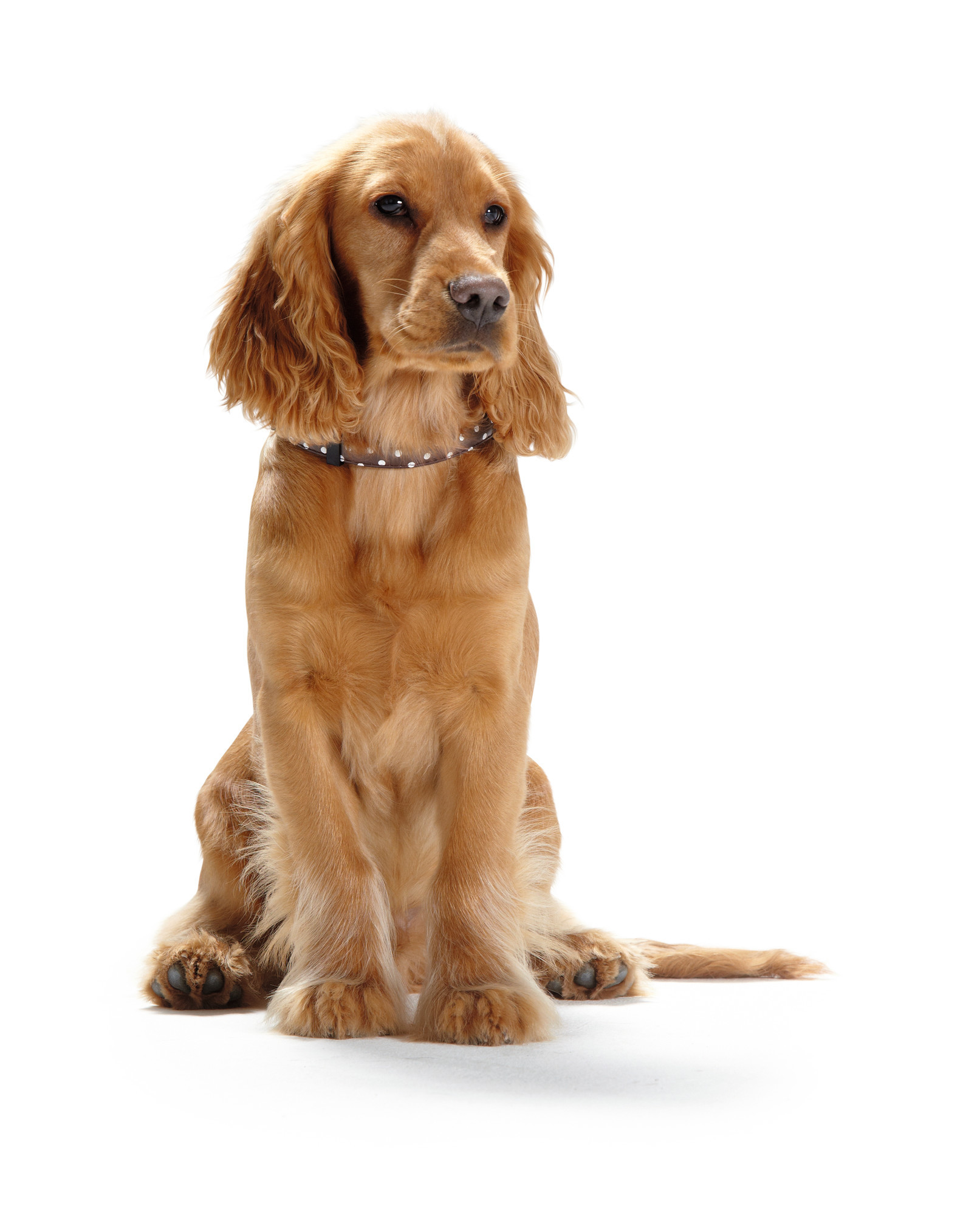
Care tips for long hair:
For the correct care, it is best to orientate yourself on the length, density and structure of the coat. Especially long and dense coats with a lot of undercoat should be brushed thoroughly every day to prevent matting. Trim the coat regularly without clipping. Long-haired dogs can usually be showered more often than dogs with other types of coat. When showering or bathing your dog, it is best to use good quality dog shampoo and rinse well so that no residue is left in the coat, as this may affect the natural protection of the skin. Important utensils include:
- Grooming comb
- Demating knife
- Stripping rake
- Dog shampoo
- Stripping knife
Special dog showers clean your furry nose particularly gently and pleasantly.
Wavy coat
The always long and slightly to strongly curly wavy coat is considered to be particularly allergy-friendly, as only very few breeds, such as the Puli, carry additional undercoat on the body and dog breeds with this coat structure shed very little. Poodles are the most popular and well-known curly dogs. Other breeds include water dogs such as the Irish Water Spaniel.
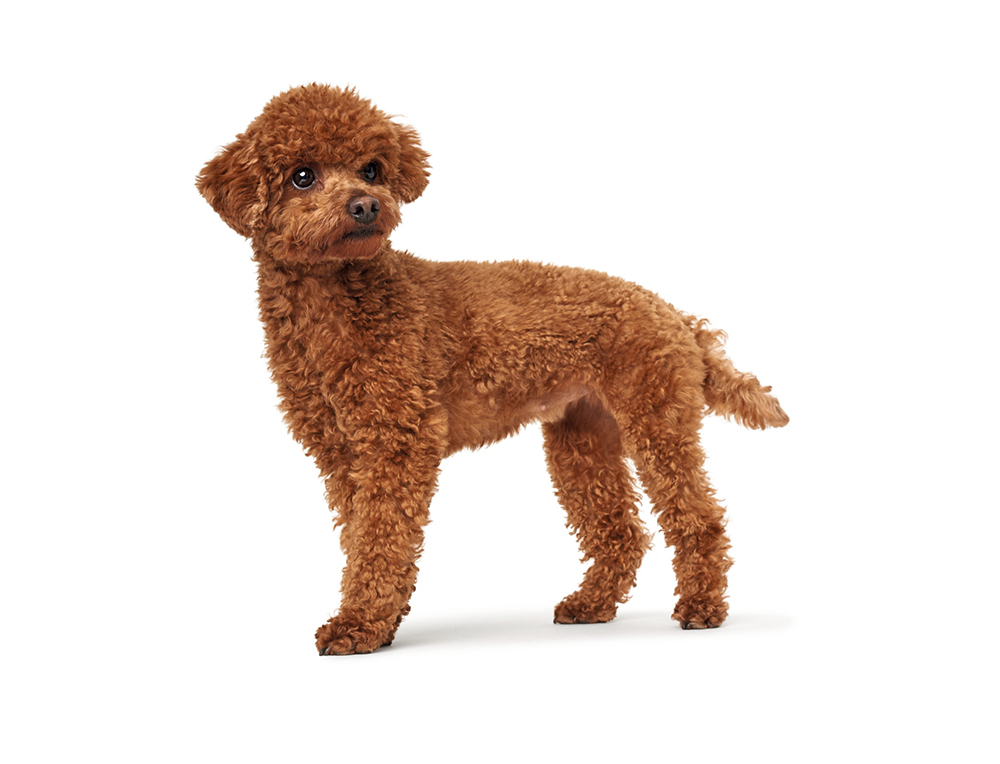
Coat care for the wavy coat:
Comb the coat extensively and shear it regularly. Otherwise the long hairs will bind together and form felt hair. As with longhaired breeds, you may also shower dogs with wavy hair more often. Besides, the wet coat is easier to comb because the curls are pulled straight in this condition. For a beautiful and healthy coat structure, use these tools at best:
- Shearing machine
- Grooming comb
- Plucking brush
Rough coat
Like very fine wire, the medium-length coat of these four-legged friends is very firm and bristly. This is why the water-repellent structure is also known as wire coat. In most breeds, undercoat grows under the top coat, for example in the Roughhaired Dachshund. The woolly coat of most terriers and schnauzers reaches the same length as the awn coat.
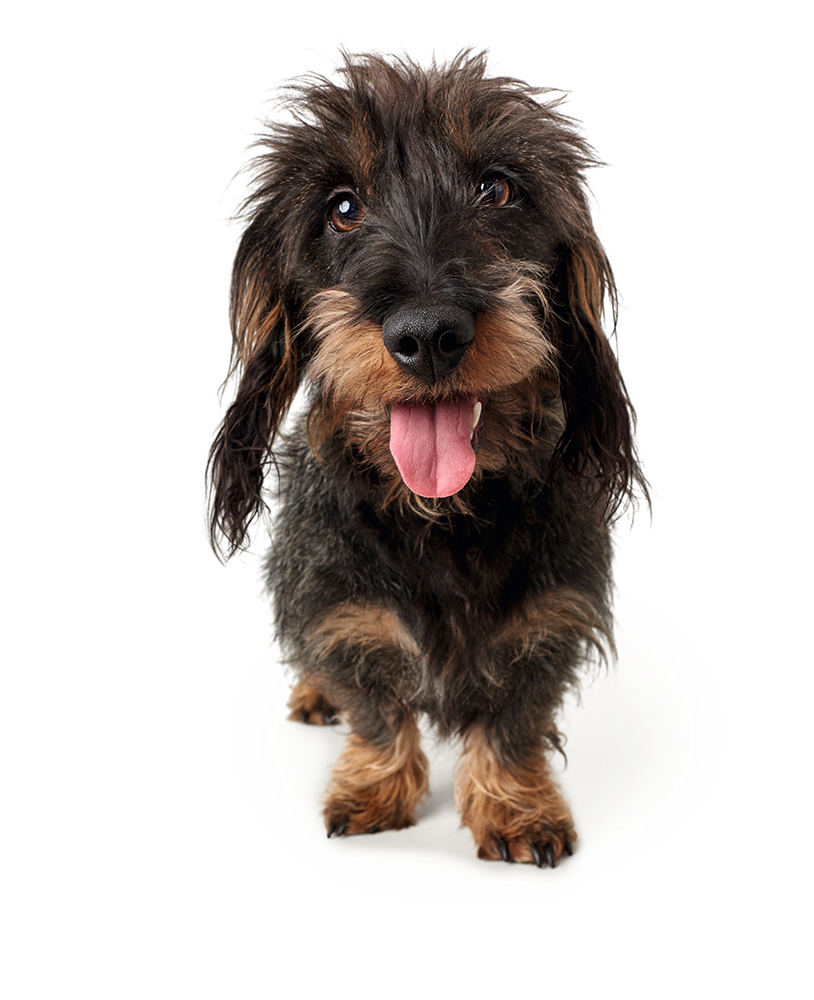
Grooming tips for rough hair:
It is best to pluck out dead hairs, as they do not fall out on their own. It is also advisable to clip and trim your furry friend regularly, as lack of care can lead to skin inflammation. Hair removal is particularly stress-free and easy with a flexible plucking brush and an stripping rake.
Mixed coat types
Mixed breed dogs live in many households and are very popular with dog owners. They are considered healthier and more robust than their purebred counterparts. Hybrid dogs in particular, i.e. crosses of two specially selected breeds such as the Labradoodle (Labrador and Poodle) have been in vogue for several years. The coat of mixed breeds and hybrid dogs can take on the structure of only one parent animal and thus be assigned to a specific coat type. However, a genetic cocktail can also be created. For example, a mix of Pug and Maltese can have the long and fine top coat of the Maltese, which hardly falls out on its own, but at the same time be equipped with the undercoat of the Pug. Also, the head, legs and flanks of the mixed breed puppy may have short fur, whereas long hair grows on the back.
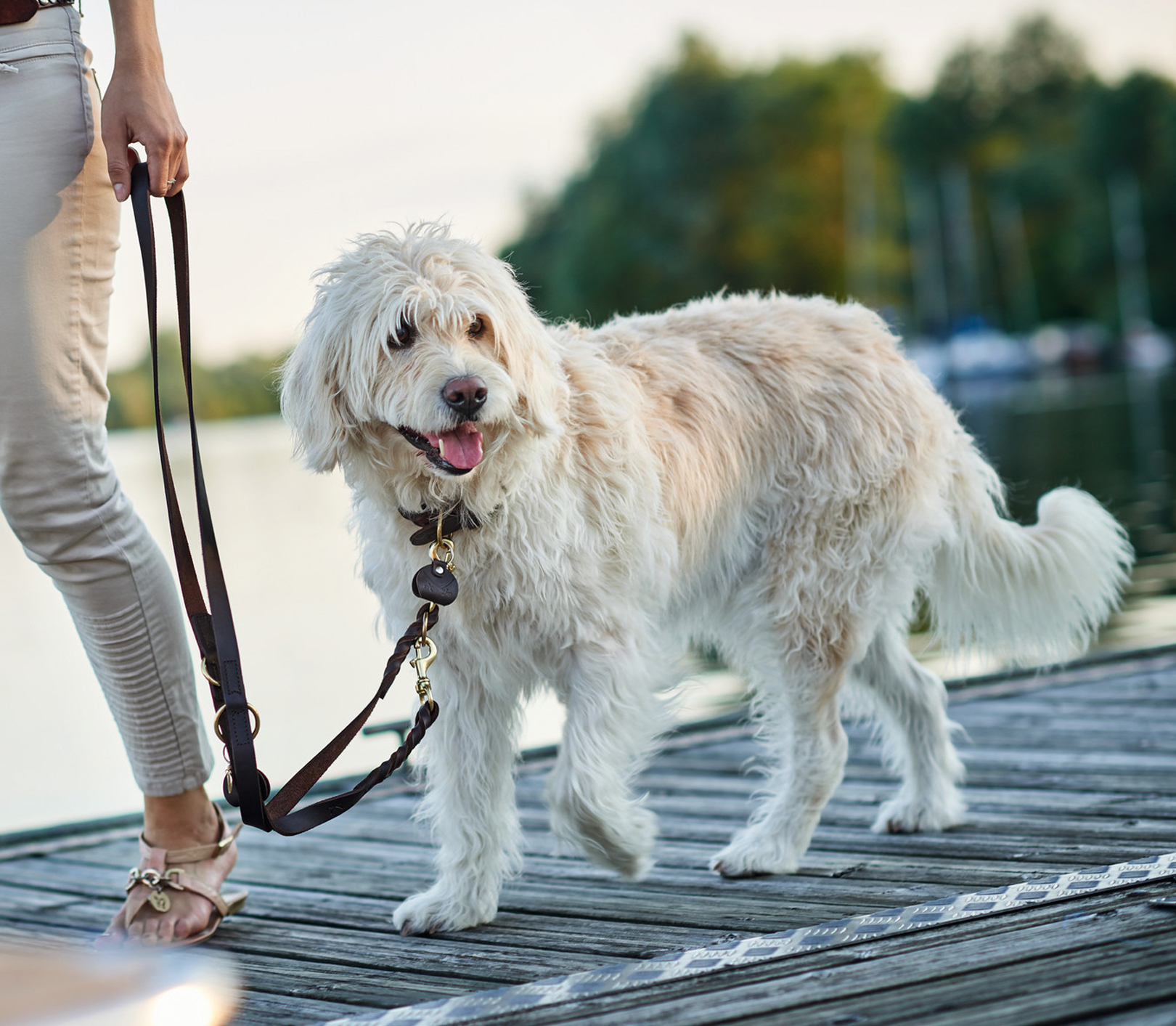
Care of the mixed coat
Unlike uniform coat structures, there is no single recipe for grooming mixed coats. It is best to follow the dominant coat structure or to use different grooming utensils depending on the body region and the hair growing there.
Conclusion: As different as the coat is, as individual is the best way to care for it. Why not use the daily brushing of your dog's long, wispy coat as a time-out together: make yourselves comfortable together and cuddle up afterwards - your four-legged friend will enjoy it to the fullest! What kind of coat does your pet have and how do you groom it? We look forward to your grooming tips!
